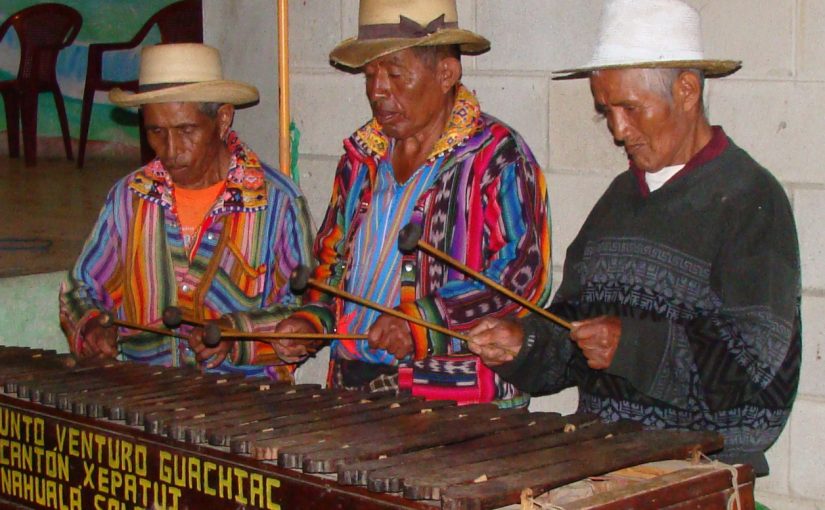This unit introduces the sounds of K’iche’. The goal is to become familiar, first, with the pronunciation of consonants and vowels and, second, with the spelling conventions that are used to write K’iche’. Do not worry if your pronunciation is not perfect. You will improve with practice throughout the course.
Jas kab’an che ub’ixik le K’iche’ ch’ab’al (The sounds of K’iche)
Most of the sounds of K’iche’ will not be challenging for a speaker of English or Spanish, as the reader will soon discover. The series of ejective consonants (b’, t’, k’, q’) will be a bit harder to articulate, but with patience and practice they can be mastered too. It should be noted that vowel length is important as several words are distinguished only by the length of their vocalic articulation. For example, the ä in chäj “pine tree” is short, while the a in chaj “ashes” is long. Short vowels will be spelt with a dieresis diacritic (¨) as in the previous example chäj. We encourage the reader not to feel discouraged if her or his pronunciation is not exactly like a native speaker’s. In this course, we strive to develop communicational competence, not “perfect articulation”! Your pronunciation will improve as you continue to practice and engage with native speakers. Begin by reading the words below and then click on the examples and listen carefully. Repeat the words aloud until you feel comfortable with your pronunciation.
The sounds of K’iche’
Some features of K’iche’ consonants and vowels are quite different from those of most Indo-European languages. The most striking are a glottalized series of consonants (ejectives) as well as the presence of both short and long vowels. Vowels are sometimes followed by a closure of the glottis (glottal stop) in which case they are followed by an apostrophe (‘).
| |
‘ | |||||
| |
||||||
| |
||||||
| |
|
Figure 1. K’iche’ Consonants
Figure 2. K’iche’ Vowels
Next we will see the letters and their pronunciation. Listen to the examples carefully and repeat them out loud. The previous tables will be useful for your reference in the future.
Consonants
/p/
/t/
/k/
/q/
/b’/
/t’/
/k’/
/q’/
/tz/
/ch/
/tz’/
/ch’/
/s/
/x/
/j/
/m/
/n/
/l/
/r/
rajil money
poro’n fire
/w/
/y/
Consonants borrowed from Spanish
In addition to the phonemes shown above, K’iche’ has borrowed some Spanish phonemes (b, f, d, g), which are restricted to Spanish loanwords such as the following:
Vowels
K’iche’ has a ten-vowel vocalic inventory, as seen in Figure 2. Vowel length is phonemic, in other words, it indicates different words. As we have seen, short vowels are distinguished from long vowels by a two dot diacritic. Note that vowel length is only important on stressed syllables (in other words, the accented syllable of each word). Most K’iche’ dialects stress word-final syllables only, including the Nahuala dialect.
/ï/
/i/
/ü/
/u/
/ë/
/e/
/ö/
/o/
/ä/
/a/

